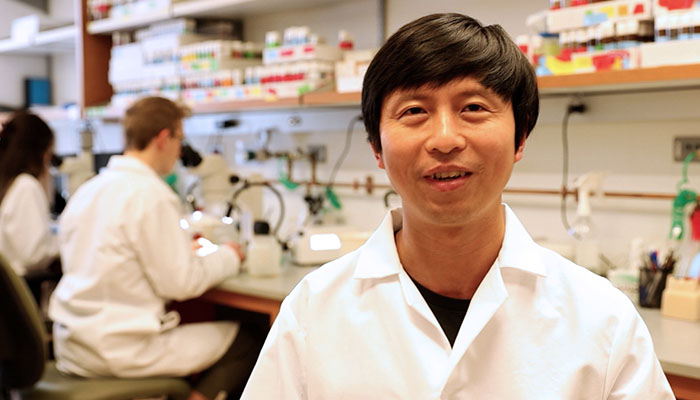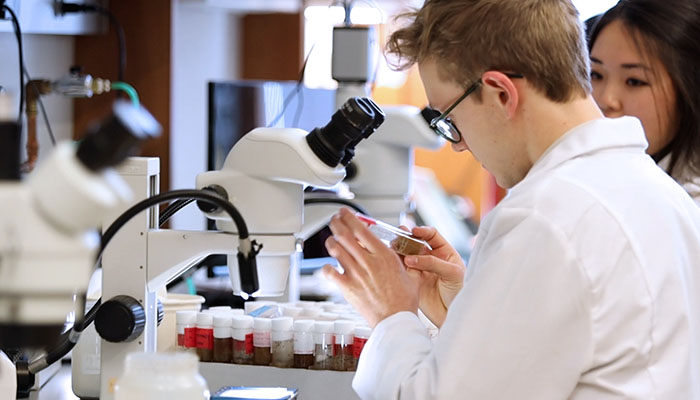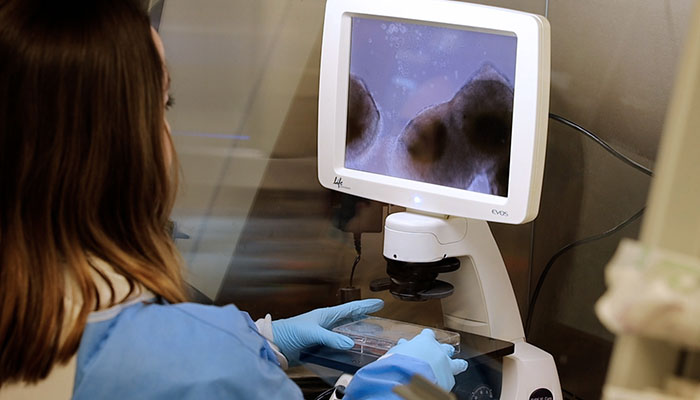HOW CAN WE HELP YOU? Call 1-800-TRY-CHOP
In This Section
Neuroregenerative Mechanisms May Protect Against Neurodegenerative Diseases

Yuanquan Song, PhD, received a PA Department of Health grant to study the genetic mechanisms behind neuroregeneration and neurodegeneration.
shafere1 [at] chop.edu (By Emily Shafer)
Neuroregeneration following spinal cord injuries and other injuries to the central nervous system may contain critical clues to treating neurodegenerative diseases such as amyotrophic lateral sclerosis (ALS). With grant support from the Pennsylvania Department of Health, Children’s Hospital of Philadelphia researchers, led by Yuanquan Song, PhD, are teasing out these mechanisms.
“In spinal injuries, there are genetic pathways that lead to neuroregeneration that promotes recovery, and our goal is to identify those neuroprotective genes, and see if they can slow down neurodegeneration in patients with diseases like ALS or Parkinson’s disease,” said Dr. Song, assistant professor in the Department of Pathology and Laboratory Medicine at CHOP. “Once we find these new targets, we can delve deep into learning how they control regeneration and learn how to reprogram them to enable better recovery from injuries and neurodegenerative diseases.”
Neurodegenerative diseases, which also include Huntington’s disease and Alzheimer’s disease and other dementias, happen when nerve cells in the brain and nervous system lose function and ultimately die. They can be genetic or they can be caused by tumors or strokes.
The research project focuses on the neurons, electrically charged cells that conduct signals from the brain and spinal cord to the rest of the body, and the glia, the neurons’ protectors, scaffolding, and metabolic support. These two main cell types of the nervous system, and the different mechanisms within those cells that regulate regeneration, are the foundation of Dr. Song’s work.

The first aim of the grant is to identify the intrinsic “brakes” in neurons that prevent neuroregeneration, and then metabolically reprogram the extrinsic environment — namely the glia — to promote neuroregeneration. To accomplish this, Dr. Song and his team will use a platform they developed that combines different injury models. They are specifically targeting the RNA 3’-terminal phosphate cyclase (Rtca)-dependent RNA repair/splicing pathway in neurons and studying the associated signaling cascades.
The second aim of the project is to reprogram the neurons and glia to suppress neurodegeneration. The hypothesis is that boosting the neuronal intrinsic and extrinsic pathways that foster axon regeneration will also protect against neurodegeneration.
“These two aims run parallel,” Dr. Song said. “We are using the pathways that promote regeneration and targeting these pathways to protect against degeneration.”

The research team will develop a novel compression axotomy microfluidics system (CAMS) for the third project aim. The system will use CRISPR-based technology to perform genetic screenings for neural regeneration and degeneration, in order to develop an unbiased platform to screen for novel regenerative and degenerative regulators. The research team will use the CAMS system to grow cells and study their response to injury to elucidate potential mechanisms of regeneration.
“With this injury paradigm, we hope to easily separate neurons that are regenerating faster from neurons that are regenerating slower,” Dr. Song said. “Once we have that knowledge, the goal is to increase the cells that are quickly regenerating and/or change the cells that are regenerating more slowly. Our goal is to build a genetic network orchestrating the degeneration/regeneration program.”
The long-term goal of the research is discovering new treatments for neurodegenerative diseases, as currently, slowing their progression is not possible, and there are no cures.